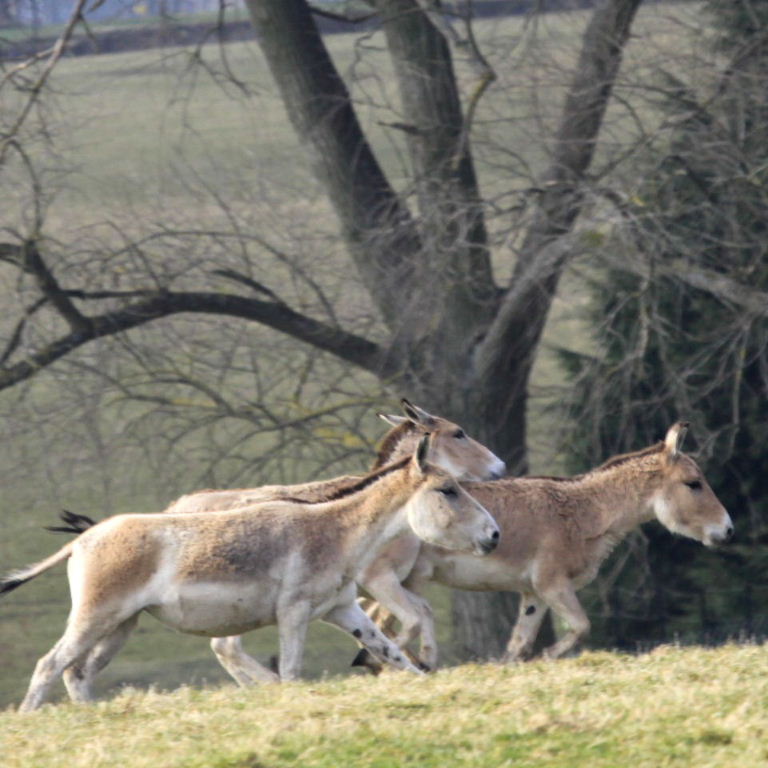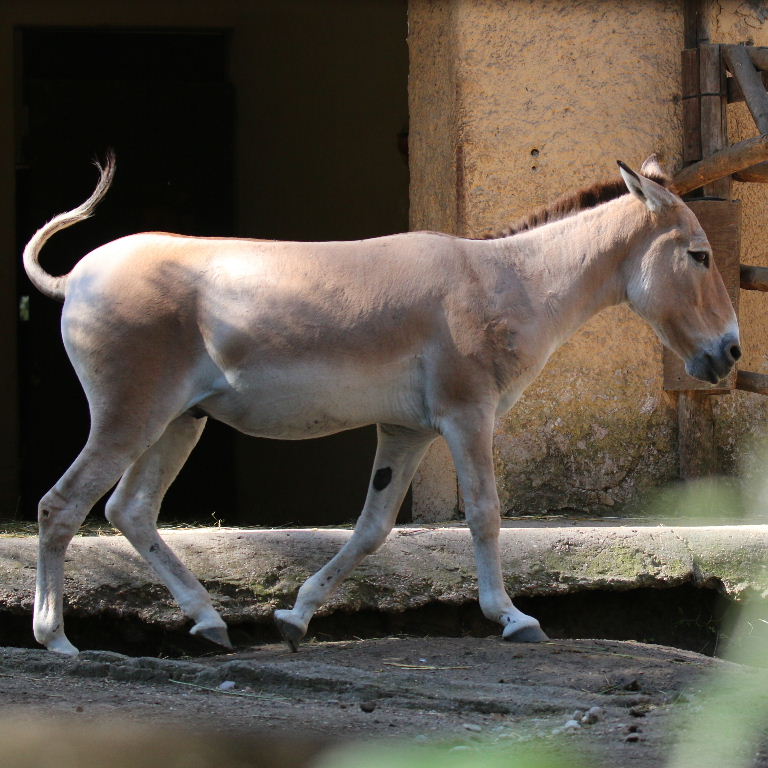Asian Wild Ass Equus hemionus


The Asian Wild Ass goes by several other names such as Onager, Kulan (Khulan), Khur and others depending on the subspecies.
Seven subspecies had been defined, covering different regions, but one is now extinct, one has been moved to full species status and five remain,
endangered mainly due to hunting for meat.



The ONAGER (Equus hemionus onager), shown above and immediately below,
is also known as the PERSIAN WILD ASS. It is notoriously wild and untameable. Less than 150 remain in the wild.



NOT shown here are: the nominal subspecies Mongolian Wild Ass or Mongolian Kulan/Khulan (E. h. hemionus),
the Indian Wild Ass or Khur (E. h. khur), the Gobi Khulan
(E. h. luteus), the Syrian Wild Ass (E. h. hemippus),
which became extinct in 1927, and the Tibetan Kiang (formerly E. h. kiang) now moved to its own species
Equus kiang. The Turkmenian Kulan (E. h. kulan) is shown further below.



The scientific name hemionus comes from the Greek meaning half-donkey
but the Asian Wild Ass is not considered the ancestor of the domestic donkey; - that is the African Wild Ass
(Equus africanus), a grey donkey-like animal from East Africa.
The Asian Wild Ass is larger than the domestic donkey and resembles a mule.



The KULAN or Khulan (Equus hemionus kulan) shown above is also known as the TURKMENIAN WILD ASS.
It is native to Central Asia. Although small, it is one of the larger of the species.
 Winter coat
Winter coat

 Summer coat
Summer coat
Its wild population was brought to the edge of extinction by illegal hunting and habitat loss. A project is underway
reintroducing Kulan to a nature reserve on the Steppes of Kazakhstan.





